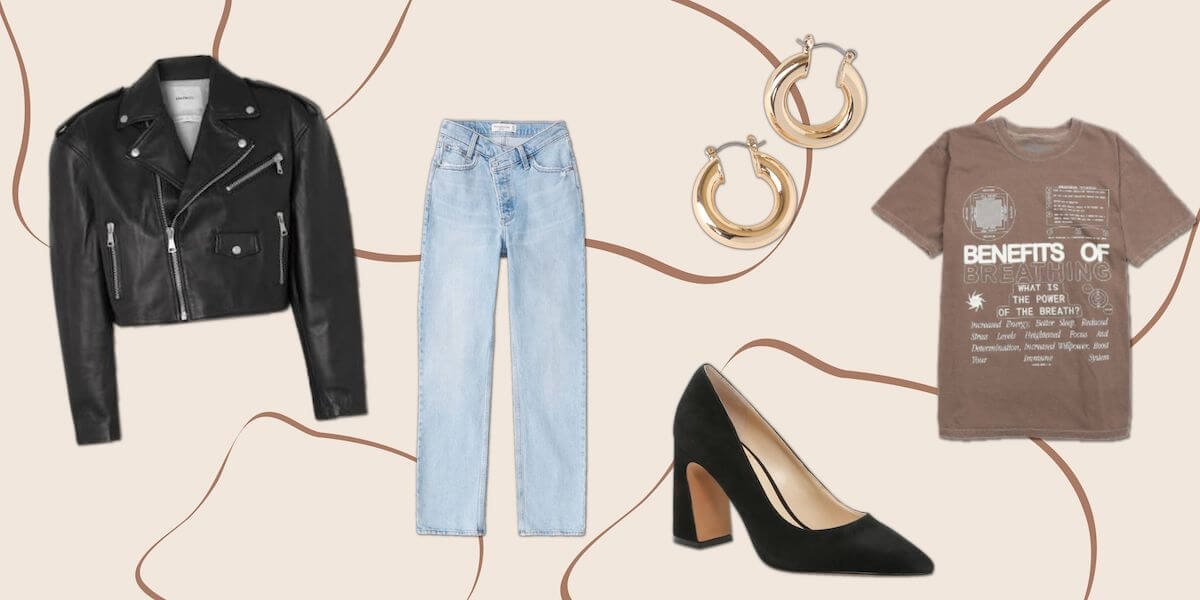Introduction
For decades, the fashion industry has been criticized for promoting narrow and often unattainable beauty standards. The archetypal “ideal” body was predominantly tall, slender, and often homogenous in appearance, leaving little room for diversity or real representation. However, the tide is turning. Thanks to the powerful body positivity movement, fashion is slowly but surely redefining what beauty means — embracing diversity in body size, shape, ethnicity, and ability.
Body positivity is more than just a trend; it’s a cultural shift demanding inclusivity and authenticity in how we see ourselves and others. This blog explores the journey of body positivity, how it’s reshaping fashion, key influencers and brands driving change, and what the future holds for beauty standards in fashion.
1. What Is Body Positivity? Origins and Philosophy
Body positivity originated as a grassroots movement in the late 1960s and 70s, initially focusing on fat acceptance. It sought to combat fat-shaming, promote self-love, and challenge stigmas attached to larger bodies. Over time, the movement expanded to advocate acceptance for all bodies — irrespective of weight, shape, skin color, ability, or gender expression.
The philosophy of body positivity rests on these core beliefs:
- All bodies are worthy and beautiful. Beauty is not confined to one size, skin tone, or ability.
- Self-love is radical. Embracing and caring for one’s body fosters mental and physical well-being.
- Rejecting unrealistic beauty standards. The narrow ideals portrayed in media are harmful and exclusionary.
- Inclusivity is essential. Fashion and media should represent the true diversity of humanity.
This movement challenges the status quo, disrupting decades of harmful messaging that equated worthiness with thinness or specific “looks.”
2. Traditional Beauty Standards in Fashion: A Brief History
Historically, the fashion industry has been exclusive. For much of the 20th century, runway and advertising models fit a very narrow mold:
- Height: Typically 5’9″ and taller
- Weight: Extremely slender, often bordering on underweight
- Skin: Predominantly white or Eurocentric features
- Youth: Primarily young, with little age diversity
These restrictive standards reinforced a single vision of beauty, shaping societal ideals and creating pressure to conform. This idealized image often led to body dissatisfaction, eating disorders, and mental health struggles among many.
Magazines retouched models to perfection, hiding imperfections like cellulite or stretch marks. Plus-size models were rare and often relegated to niche markets or plus-size only fashion lines.
3. The Rise of the Body Positivity Movement in Fashion
The late 2000s and early 2010s marked a turning point as social media empowered marginalized voices. Platforms like Instagram, Twitter, and YouTube allowed everyday people to share their stories and challenge unrealistic beauty norms. The body positivity movement flourished online, encouraging self-love and celebrating diverse bodies.
Key moments include:
- Plus-size models breaking barriers: Models like Ashley Graham and Tess Holliday gained prominence, landing major campaigns and magazine covers.
- Hashtags galvanizing communities: #BodyPositivity, #EffYourBeautyStandards, and #LoveYourself became rallying cries.
- Celebrity advocates: Public figures like Lizzo and Jameela Jamil have vocally supported body positivity, increasing visibility.
- Brands responding: Companies like Aerie and Savage X Fenty started showcasing diverse body types in campaigns, including unretouched photos.
4. Influencers and Icons Changing the Narrative
Ashley Graham
Ashley Graham is a game-changer in fashion’s body positivity landscape. The first plus-size model on the cover of Sports Illustrated Swimsuit Edition (2016), she continuously advocates for self-love, challenging the notion that fashion is only for “skinny” women. Graham embraces her curves openly and uses her platform to talk about body confidence, motherhood, and breaking stigmas.
Tess Holliday
Tess Holliday, founder of the #EffYourBeautyStandards movement, embodies unapologetic body positivity. A size 22 model, she uses social media to normalize plus-size representation in fashion and fight fatphobia. Holliday’s work has inspired many to embrace their natural bodies and reject shame.
Denise Mercedes
Denise Mercedes made waves with her viral #BecauseItsMyBody campaign, encouraging people of all sizes to share unfiltered photos celebrating their bodies. As a plus-size Latina model, she also emphasizes representation across ethnicities and backgrounds.

5. Fashion Brands Leading the Body Positivity Revolution
Savage X Fenty
Rihanna’s lingerie brand revolutionized inclusivity by featuring models of every size, skin tone, and gender identity in bold, unapologetic campaigns. Savage X Fenty embraces diversity as central to its identity, celebrating confidence over conformity.
Aerie
The #AerieREAL campaign pledged to stop retouching photos and highlight real women with stretch marks, scars, and cellulite. This commitment to authenticity won praise and showed the commercial and social value of genuine representation.
Universal Standard
Universal Standard offers an extensive size range (00 to 40), breaking barriers in high fashion’s traditional sizing limitations. Its mission is to make high-quality, stylish clothing accessible to everyone, challenging industry norms.
ThirdLove and Rebdolls
Both ThirdLove and Rebdolls focus on comfort, fit, and inclusivity, offering extensive size ranges and celebrating all body types through their marketing efforts.
6. The Role of Social Media in Democratizing Beauty
Social media has been revolutionary for the body positivity movement. It has:
- Enabled marginalized voices: Everyday people can share stories, creating diverse role models.
- Challenged traditional gatekeepers: Consumers directly demand inclusivity from brands.
- Fostered supportive communities: People find acceptance and encouragement online.
- Increased transparency: Brands are called out or praised in real time, pushing accountability.
Hashtags like #BodyPositivity have millions of posts, reflecting global engagement and shifting culture.
7. The Psychological Impact of Body Positivity
The fashion industry’s old beauty standards contributed to widespread body dissatisfaction and mental health issues, especially among young people. The body positivity movement has helped combat these effects by:
- Promoting self-acceptance and self-esteem
- Reducing stigma and shame around diverse bodies
- Encouraging healthier relationships with food and exercise
- Highlighting the importance of mental well-being over appearance
Research shows that exposure to diverse and realistic body images leads to improved body image and greater confidence.
8. Challenges and Criticisms
While progress is undeniable, the movement isn’t without criticism:
- Commercialization: Some accuse brands of “performative allyship,” using body positivity as a marketing tool without genuine commitment.
- Exclusion within inclusivity: There’s still a lack of representation for people with disabilities, older adults, and non-binary individuals.
- Health debates: Some argue body positivity should be balanced with promoting health and well-being, leading to discussions around “body neutrality.”
- Oversaturation and backlash: Like many movements, body positivity faces backlash from conservative perspectives and cultural pushback.
9. How the Industry Is Changing from Within
Beyond marketing, change is occurring at structural levels:
- Expanded sizing in major brands: Stores like Target, Zara, and Nordstrom have broadened their size ranges.
- Diverse runway casting: Fashion weeks now feature models of various sizes, races, and gender expressions.
- Inclusive product design: Designers create adaptive clothing lines and inclusive underwear.
- Leadership shifts: More diverse voices are emerging in creative director roles and fashion leadership.
10. What Consumers Can Do to Support the Movement
Consumers have immense power to influence the industry by:
- Supporting inclusive brands that practice genuine representation
- Amplifying diverse voices on social media
- Challenging harmful beauty standards in everyday conversations
- Educating themselves about body positivity and its intersections with race, gender, and ability
11. The Future of Body Positivity and Beauty Standards in Fashion
The future looks promising:
- Technology enabling customization: AI and 3D printing may allow perfectly fitting clothes for all bodies.
- Virtual fashion and avatars: Digital fashion allows expression without physical constraints.
- Global inclusivity: Growing awareness of diverse cultural beauty ideals beyond Western norms.
- Sustainability alignment: Body positivity aligns with sustainability, focusing on mindful consumption rather than fast fashion.
As society evolves, so will beauty ideals — hopefully becoming more inclusive, authentic, and empowering.
Conclusion
The body positivity movement is not just reshaping fashion; it’s reshaping how we view ourselves and others. By challenging outdated standards and celebrating diversity, body positivity is ushering in a new era of beauty — one that is inclusive, empowering, and true to the complex, beautiful variety of human bodies.
Fashion’s journey towards inclusivity has made significant strides, but the work continues. The combined efforts of influencers, brands, and consumers will ensure that future generations grow up in a world where every body is recognized, valued, and celebrated.
Share this content:



















Post Comment